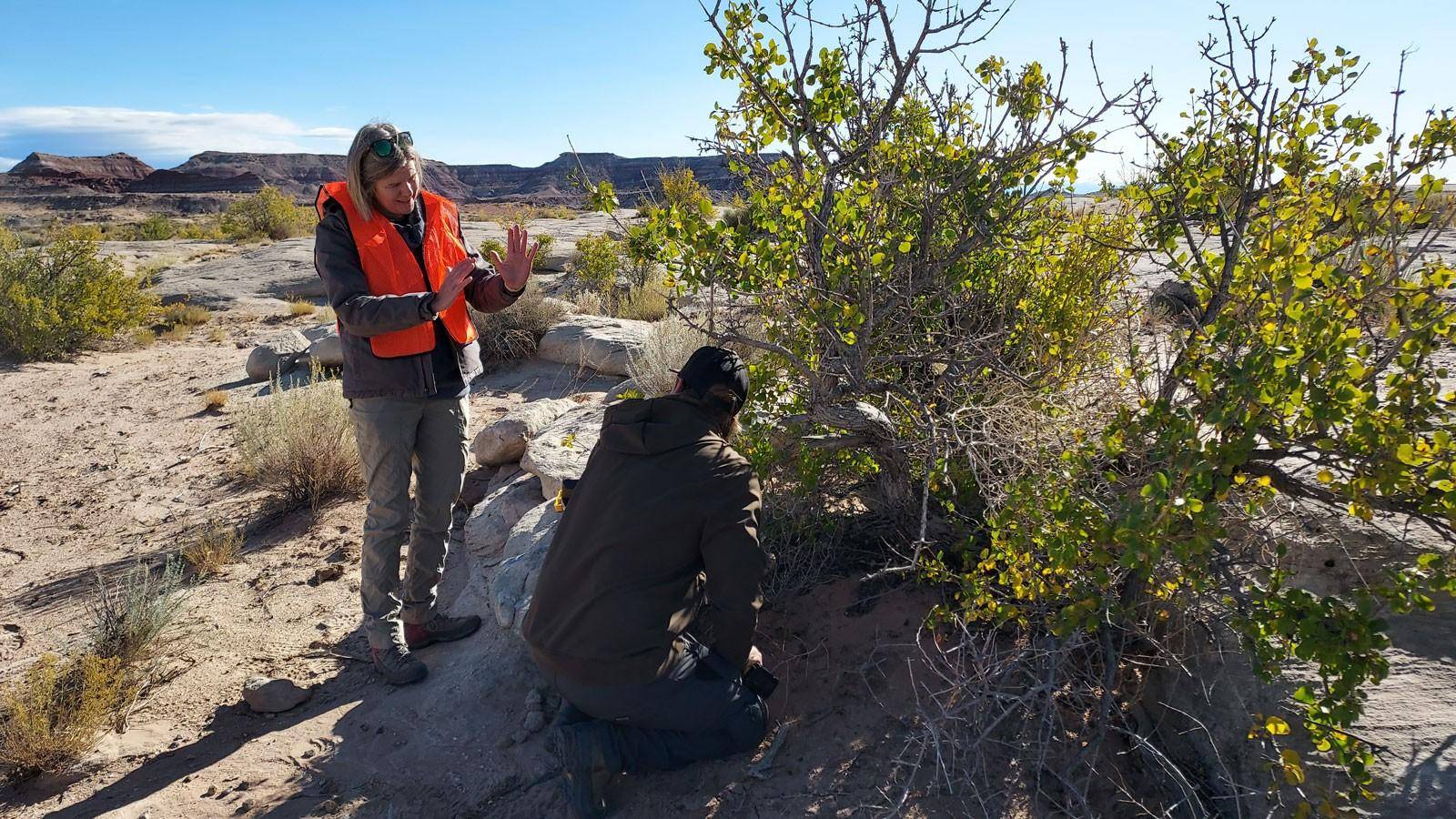USU Eastern Press Release
What does the fox say? Or to use research from students at Utah State University Eastern, where do they stay? Three USU Eastern students in the Wildland Resource Techniques course presented research to the local Bureau of Land Management (BLM) and the Division of Wildlife Resources (DWR) on a study of kit foxes and their habitation in the Emery County region.
USU students Laura Redfield, Hayden Tallerico and Tanyon Allred, with help from USU Associate Professor Sunshine Brosi, looked to expand on previous research performed by the BLM and add to the literature about kit fox occupancy in the area, a species that, according to the U.S. Environmental Protection Agency, is a threatened species.
“There is limited information regarding kit foxes in this specific habitat,” Brosi said. “The BLM has completed previous research in 2018 on the kit fox; we were able to both confirm kit foxes were still using areas they had been found in the past and to document new areas of occupancy. The students completed this research as part of their class experience, and then presented their results to our local BLM scientists.”
The research method was submitted to the BLM for approval and permitting prior to the study being done. The goal was to help the agency have more data so they can know with certainty what types of animals inhabit certain regions and how their habitat could be affected by human activity.
“The kit fox is a species of concern across this range, but in particular in Utah,” Redfield said. “The BLM had an interest in finding out whether or not the kit fox occupies spaces where they are interested in doing land use surveys. They want to make sure there is no interference between the kit fox and land users. We are working to protect those areas where the foxes are detected.”
Students used motion capture cameras with night vision and set baits to try and lure animals to the area to be photographed. The students used multiple types of baits, including visual baits of feather lures, auditory squeakers, and food baits of sardines, Vienna sausages, and tuna.
“We used multiple methods of attraction and trail cameras to get pictures of whatever critters managed to catch our lens,” Tallerico said. “Although the desert doesn’t seem like a place that would be full of wildlife, it actually holds a variety of interesting species, including kit foxes, bobcats and coyotes.”
The study was performed over the space of several weeks, with students routinely changing out food bait and checking the camera cards weekly for wildlife. During the span, the students were able to capture images of three kit foxes as well as bobcats, owls, squirrels, packrats and coyotes.
“All but one of these sightings were at night, which is why the desert often seems empty, but is surprising pretty full,” Tallerico said. “And the fan favorite of all these baits? Vienna sausages. The Vienna sausages were the only ones that were completely empty almost every time. So, in case you were wondering what type of food desert animals like, now you know.”
The students hope this preliminary study will help lay the groundwork for more research into the area. The group presented its findings to the BLM and DWR to give the departments more information as to the types of wildlife that inhabit these areas. This data will in turn be used to affect decision making and policies concerning the addition of off-road paths and how the area can be used.
The students enjoyed the project and were grateful to get the hands-on experience that went beyond just theory in the classroom.
“Lots of times, the research you do in class is theoretical,” Redfield said. “This was a unique circumstance where we got to collaborate with a national agency. And it was a great opportunity for us, as students, to develop those connections and get this very applied ecological experience. It was an invaluable experience for us as professionals.”
The hope is to keep outdoor activities available while also protecting the habitat of previously-unstudied species in the area, such as the kit fox.
Allred will continue the work on attracting birds to game cameras as part of his spring ornithology class. In addition, students in the statewide faculty-student mentoring program will be monitoring kit foxes at water structures this spring.
“These projects focus on our community-engaged learning objectives and provide students will real-life resume skills, including public speaking,” Brosi said. “They also connect students with agency professionals who may employ them in the future.”

